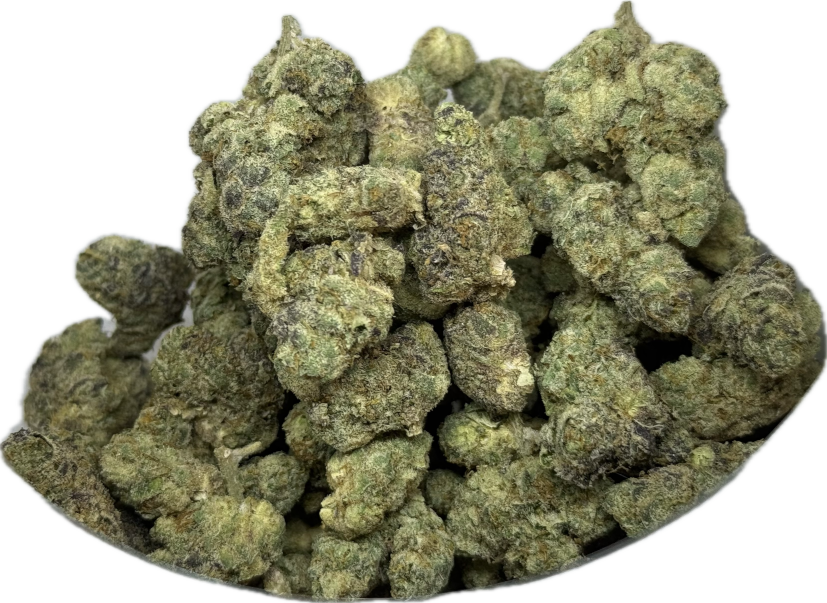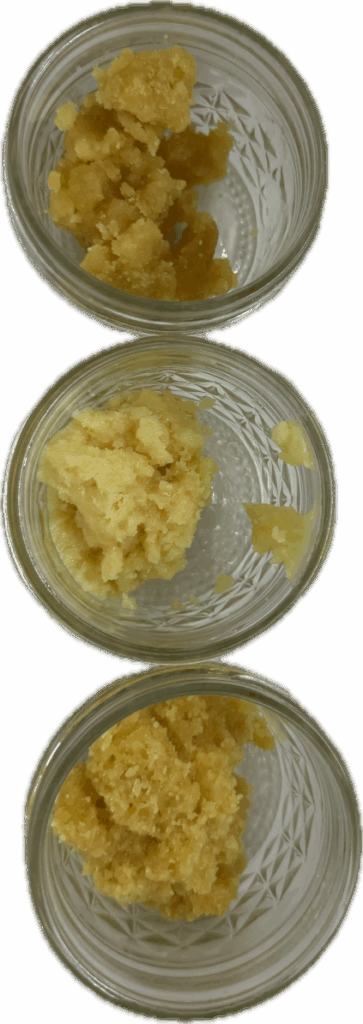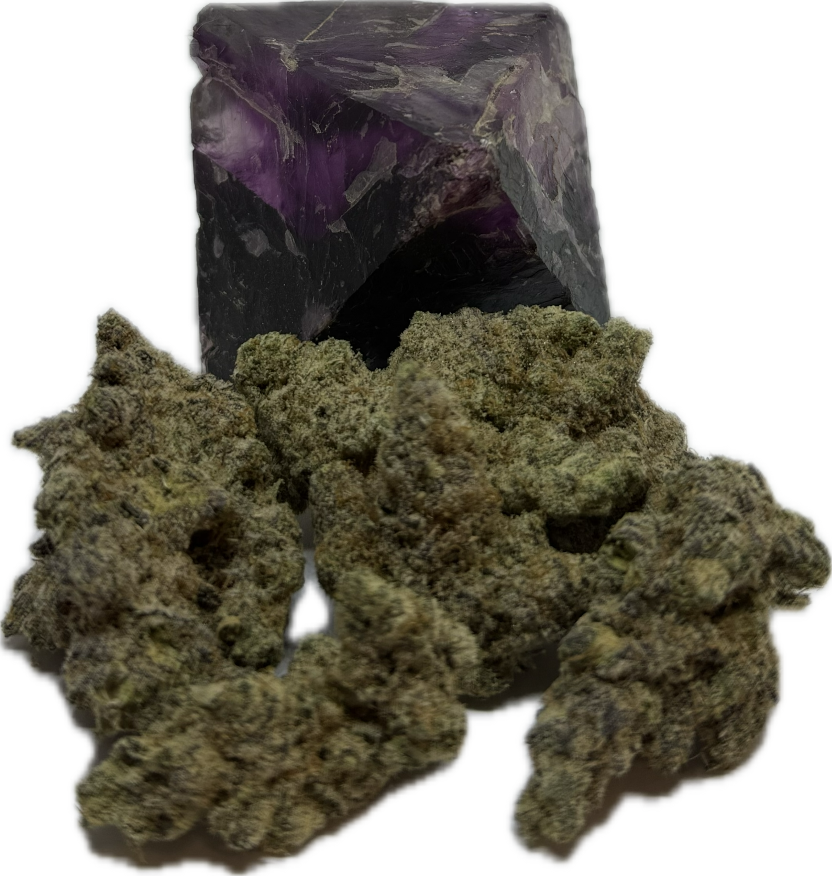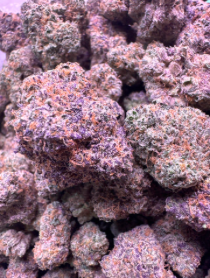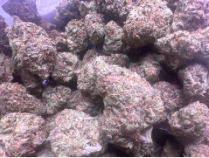Terpenes (/ˈtɜːrpiːn/) are a large and diverse class of organic hydrocarbons, produced by a variety of plants and insects. Terpenes and terpenoids (modified terpenes) are the primary constituents of the essential oils of many types of plants and flowers. Essential oils are used widely as fragrances in perfumery and traditional medicine, such as aromatherapy. Synthetic variations and derivatives of natural terpenes and terpenoids also greatly expand the variety of aromas used in perfumery and flavors used in food additives. Vitamin A is a popular terpenoid.
Terpenes may be classified by the number of isoprene units in the molecule; a prefix in the name indicates the number of terpene units needed to assemble the molecule.
- Hemiterpenes consist of a single isoprene unit. Isoprene itself is considered the only hemiterpene, but oxygen-containing derivatives such as prenol and isovaleric acid are hemiterpenoids.
- Monoterpenes consist of two isoprene units and have the molecular formula C10H16. Examples of monoterpenes and monoterpenoids include geraniol, terpineol (present in lilacs), limonene(present in citrus fruits), myrcene (present in hops), linalool (present in lavender) or pinene (present in pine trees).[1] Iridoids derive from monoterpenes.
- Sesquiterpenes consist of three isoprene units and have the molecular formula C15H24. Examples of sesquiterpenes and sesquiterpenoids include humulene, farnesenes, farnesol. (The sesqui- prefix means one and a half.)
- Diterpenes are composed of four isoprene units and have the molecular formula C20H32. They derive from geranylgeranyl pyrophosphate. Examples of diterpenes and diterpenoids are cafestol, kahweol, cembrene and taxadiene (precursor of taxol). Diterpenes also form the basis for biologically important compounds such as retinol, retinal, and phytol.
- Sesterterpenes, terpenes having 25 carbons and five isoprene units, are rare relative to the other sizes. (The sester- prefix means two and a half.) An example of a sesterterpenoid is geranylfarnesol.
- Triterpenes consist of six isoprene units and have the molecular formula C30H48. The linear triterpene squalene, the major constituent of shark liver oil, is derived from the reductive coupling of two molecules of farnesyl pyrophosphate. Squalene is then processed biosynthetically to generate either lanosterol or cycloartenol, the structural precursors to all the steroids.
- Sesquarterpenes are composed of seven isoprene units and have the molecular formula C35H56. Sesquarterpenes are typically microbial in their origin. Examples of sesquarterpenoids are ferrugicadiol and tetraprenylcurcumene.
- Tetraterpenes contain eight isoprene units and have the molecular formula C40H64. Biologically important tetraterpenoids include the acyclic lycopene, the monocyclic gamma-carotene, and the bicyclic alpha- and beta-carotenes.
- Polyterpenes consist of long chains of many isoprene units. Natural rubber consists of polyisoprene in which the double bonds are cis. Some plants produce a polyisoprene with trans double bonds, known as gutta-percha.
- Norisoprenoids, such as the C13-norisoprenoids 3-oxo-α-ionol present in Muscat of Alexandria leaves and 7,8-dihydroionone derivatives, such as megastigmane–3,9-diol and 3-oxo-7,8–dihydro–α-ionol found in Shiraz leaves (both grapes in the species Vitis vinifera)[2] or wine[3][4] (responsible for some of the spice notes in Chardonnay), can be produced by fungal peroxidases[5] or glycosidases.[15]
How do terpenes effect cannabis? – an interesting resource from BAS Research.
Linolool –
Linalool is
Limonene –
Limonene is
Myrcene
Myrcene, or β-myrcene, is an olefinic natural organic hydrocarbon. It is more precisely classified as a monoterpene. Myrcene is a significant component of the essential oil of several plants, including bay, cannabis, ylang–ylang, wild thyme, parsley, cardamom, and hops.[1][2] Myrcene is an important intermediate used in the perfumery industry. It has a pleasant odor but is rarely used directly.[1]
Potential Benefits: anti-inflammatory, analgesic (pain relief), antibiotic, sedative, antimutagenic
Pinene
Pinene is a bicyclic monoterpene chemical compound,[3] The two isomers of pinene constitute the major component of turpentine, and α-pinene is the most widely encountered terpenoid in nature[4] Selective oxidation of pinene with catalysts yields many compounds for perfumery, such as artificial odorants. An important oxidation product is verbenone, along with pinene oxide, verbenol, and verbenyl hydroperoxide.[5]
Potential Benefits: memory retention, alertness, treatment of asthma, pain, inflammation, ulcers, anxiety, cancer.
- Breitmaier, Eberhard (2006). Terpenes: Flavors, Fragrances, Pharmaca, Pheromones. John Wiley & Sons. pp. 1–13. ISBN 978-3527317868.
- Günata, Z.; Wirth, J. L.; Guo, W.; Baumes, R. L. (2001). Carotenoid-Derived Aroma Compounds; chapter 13: Norisoprenoid Aglycon Composition of Leaves and Grape Berries from Muscat of Alexandria and Shiraz Cultivars. ACS Symposium Series. 802. pp. 255–261. doi:10.1021/bk-2002-0802.ch018. ISBN 978-0-8412-3729-2.
- Winterhalter, P.; Sefton, M. A.; Williams, P. J. (1990). “VolatileC13-NorisoprenoidCompounds in Riesling Wine Are Generated From Multiple Precursors”. American Journal of Enology and Viticulture. 41 (4): 277–283.
- Vinholes, J.; Coimbra, M. A.; Rocha, S. M. (2009). “Rapid tool for assessment of C13 norisoprenoids in wines”. Journal of Chromatography A. 1216 (47): 8398–8403. doi:10.1016/j.chroma.2009.09.061. PMID 19828152.
- Zelena, K.; Hardebusch, B.; Hülsdau, B.; Berger, R. G.; Zorn, H. (2009). “Generation of Norisoprenoid Flavors from Carotenoids by Fungal Peroxidases”. Journal of Agricultural and Food Chemistry. 57 (21): 9951–9955. doi:10.1021/jf901438m. PMID 19817422.
- Cabaroğlu, T.; Selli, S.; Canbaş, A.; Lepoutre, J.-P.; Günata, Z. (2003). “Wine flavor enhancement through the use of exogenous fungal glycosidases”. Enzyme and Microbial Technology. 33 (5): 581–587. doi:10.1016/S0141-0229(03)00179-0.
- Behr, A.; Johnen, L. (2009). “Myrcene as a Natural Base Chemical in Sustainable Chemistry: A Critical Review”. ChemSusChem. 2 (12): 1072–1095. doi:10.1002/cssc.200900186. PMID20013989.
- Chyau, C.-C.; Mau, J.-L.; Wu, C.-M. (1996). “Characteristics of the Steam-Distilled Oil and Carbon Dioxide Extract of Zanthoxylum simulans Fruits”. Journal of Agricultural and Food Chemistry. 44 (4): 1096–1099. doi:10.1021/jf950577d.
- Record of alpha-Pinen in the GESTIS Substance Database of the Institute for Occupational Safety and Health, accessed on 07-January-2016.
- Noma Y, Asakawa Y (2010). Biotransformation of monoterpenoids by microorganisms, insects, and mammals. In: Baser KHC, Buchbauer G (eds). Handbook of Essential Oils: Science, Technology, and Applications. CRC Press: Boca Raton, Florida, pp. 585–736.
- U. Neuenschwander (2010). “Mechanism of the Aerobic Oxidation of α-Pinene”. ChemSusChem (in German). 3 (1): 75–84. doi:10.1002/cssc.200900228. PMID20017184.

